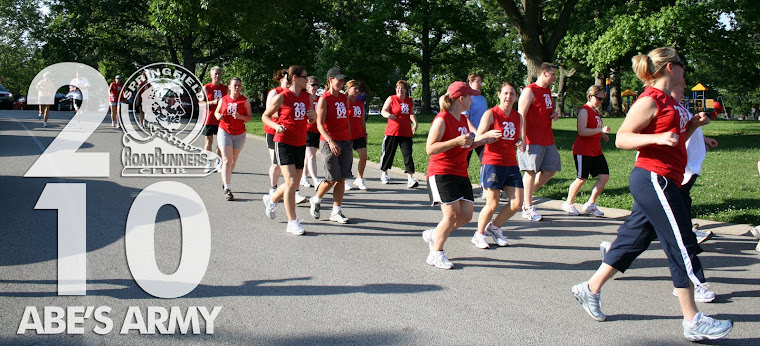Have you experienced muscle pain from increasing your exercise and muscle groups used in the Abe's Army training? Advice from Joe Thiel, Certified Personal Trainer can help you deal with this common problem.
Delayed Onset Muscle Soreness: Dealing with muscle pain after exercise
Delayed onset muscle soreness (DOMS) after exercise is not uncommon, particularly if you are just beginning an exercise program or changing activities. For those starting a new exercise routine or learning a new sport, some muscle soreness may be felt from 12-48 hours following the activity. You may also experience muscle stiffness, fatigue and weakness. Rest assured, this is a normal response to unusual exertion as the muscles adapt to the new stress. Over time this adaptation leads to greater muscle strength and endurance and the same activity will no longer result in soreness. Delayed onset muscle soreness is generally the worst within the first 2 days following the activity and subsides over the next few days.
Causes of DOMS
It is thought that delayed onset muscle soreness is the result of microscopic tearing of the muscle fibers. The amount of tearing (and soreness) depends on the activity, the intensity and the time of activity. Any movement you aren’t used to can lead to DOMS, but eccentric muscle contraction (movements that cause muscle to contract while it lengthens) seem to cause the most soreness. Examples of eccentric muscle contractions include going down stairs, running downhill, lowering weights and the downward motion of squats and push-ups. In addition to small muscle tears there can be associated swelling in a muscle which may contribute to soreness.
Preventing DOMS
While DOMS is common and annoying, it is not a necessary part of getting into shape. There are many things you can do to prevent, avoid and shorten DOMS. Here are a few tips:
--Warm up thoroughly before activity and cool down completely afterward.
--Perform easy stretching after exercise
--When beginning a new activity start gradually and build up your time and intensity over time.
--Start a new weight lifting routine with light weights and high reps (10-12) and gradually increase the amount you lift over several weeks.
--Avoid making sudden major changes in the type of exercise you do.
--Avoid making sudden major changes in the amount of time that you exercise.
Too Late! You are Already Sore.
Here are some tips for treating delayed soreness:
--Wait. Soreness will go away in 3 to 7 days with no special treatment.
--Avoid any vigorous activity that increases pain.
--Do some easy low-impact aerobic exercise – this will increase blood flow to the affected muscles, which may help diminish soreness.
--Use the RICE (Rest, Ice, Compression, Elevation) method of treating injuries.
--Use gentle stretching on the affected area.
--Gently massage the affected muscles.
--Try using a nonsteroidal anti-inflammatory medication (aspirin or ibuprofen) to reduce to soreness temporarily, though they won’t actually speed healing.
--There is some evidence that vitamin C may decrease soreness.
--Allow the soreness to subside thoroughly before performing any vigorous exercise.
--Don’t forget to warm up completely before your next exercise session.
Some pain can be a sign of serious injury. If your muscle soreness does not get better within a week consult your physician.
Joe is owner of Fitness Together along with his wife Jill, and partners Rick and Betsy Moore. He can be reached at: Phone 726-7613; Email jnjthiel@att.net; Website http://www.ftspringfield.com/
Wednesday, July 19, 2006
Abe's Aides: Delayed Onset Muscle Soreness
Subscribe to:
Post Comments (Atom)

1 comment:
Who knows where to download XRumer 5.0 Palladium?
Help, please. All recommend this program to effectively advertise on the Internet, this is the best program!
Post a Comment